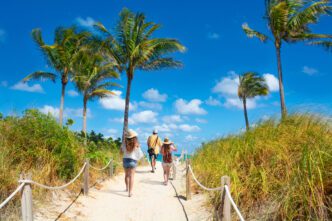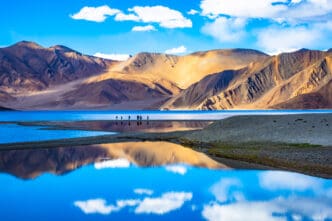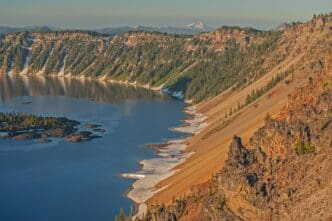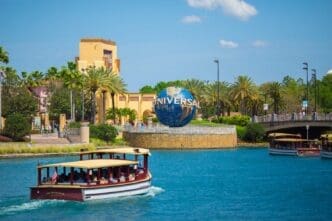Your Essential Overview
- Napa Valley is a premier wine region characterized by its diverse terroir and 16 distinct AVAs, primarily known for Cabernet Sauvignon but also offering various other high-quality wines.
- Successful visits to Napa Valley require thoughtful advance planning, including booking accommodations, arranging transportation, and securing reservations for most winery tastings and tours.
- The region offers a wide array of winery experiences, from grand estate tours and intimate boutique tastings to cave experiences and food pairings, alongside non-wine activities like hot air balloon rides and culinary programs.
The Destination’s Lore
- Napa Valley’s status as a premier global wine destination is rooted in its unique terroir, encompassing diverse microclimates and soil types across 16 distinct AVAs, which enables the flourishing of a wide range of high-quality grape varietals, with Cabernet Sauvignon being its signature. This renowned region now requires visitors to undertake thoughtful advance planning, including securing reservations for most winery experiences, arranging transportation, and booking accommodations, to navigate its extensive offerings effectively.
Making the Trip Yours
- Napa Valley has evolved into a highly curated luxury destination, demanding meticulous advance planning from visitors due to the widespread requirement for reservations at most wineries, especially during peak seasons. This shift, combined with the region’s diverse terroir offering a vast array of wine styles and its expanded appeal as a culinary and cultural hub, means that successful visits now necessitate strategic itinerary building to fully experience its multifaceted offerings beyond just wine.
Perspectives from the Road
- Visitors focused on maximizing their trip believe that thorough planning, including booking transportation, accommodation, and winery reservations well in advance, is essential for a seamless experience.
- Those seeking a rich and varied experience advocate for exploring Napa’s diverse offerings, mixing visits to grand estates with boutique wineries, incorporating food pairings, and appreciating the region’s art, architecture, and natural beauty.
- Responsible travelers emphasize the importance of pacing, staying hydrated, eating regularly, and grouping winery visits geographically to prevent palate fatigue and ensure a pleasant, informed adventure.

Napa Valley, California, stands as an undisputed global mecca for wine enthusiasts and luxury travelers seeking an unparalleled sensory journey. This ultimate guide is designed for anyone – from first-time visitors to seasoned connoisseurs – looking to navigate the region’s vast offerings, providing actionable advice on where to go, what to do, and how to make the most of a visit to this iconic wine country, ideally experienced during the pleasant weather of spring or the vibrant harvest season of fall, ensuring a memorable and informed adventure through its world-renowned vineyards and culinary landscape.
Understanding Napa Valley’s Terroir and Appellations
Napa Valley’s reputation as a premier wine region is deeply rooted in its unique geographical and climatic conditions, collectively known as its terroir. This narrow valley, approximately 30 miles long, boasts an extraordinary diversity of microclimates and soil types, allowing for a wide range of grape varietals to flourish.

The valley is home to 16 distinct American Viticultural Areas (AVAs), each contributing its own character to the wines produced. From the cooler, fog-influenced Carneros AVA in the south, known for its Pinot Noir and Chardonnay, to the warmer, volcanic soils of Calistoga in the north, ideal for robust Cabernet Sauvignon, understanding these differences enhances the tasting experience.
While Cabernet Sauvignon reigns supreme as Napa’s signature grape, producing some of the world’s most sought-after and age-worthy wines, visitors will also discover exceptional Merlot, Zinfandel, Sauvignon Blanc, and Chardonnay. Many wineries specialize in a particular varietal, offering a focused tasting, while others present a broader portfolio reflecting the valley’s diverse capabilities.
Planning Your Napa Valley Journey
A successful trip to Napa Valley requires thoughtful planning to maximize enjoyment and minimize stress. Considerations such as timing, transportation, and accommodation are crucial for a seamless experience.

Best Time to Visit
Each season in Napa Valley offers a unique charm. Spring, from April to May, sees the vineyards burst into vibrant green with bud break and mustard flowers, offering pleasant temperatures and fewer crowds. Fall, specifically September and October, is harvest season, a truly exhilarating time with bustling activity, grape stomps, and celebratory events, though it is also the busiest and most expensive period. Summer (June-August) is warm and popular, while winter (November-March) offers a quieter, more intimate experience with cozy fireside tastings and often better deals on accommodations.
Transportation Within the Valley
Navigating Napa Valley requires a plan, especially if you intend to partake in tastings. A designated driver is essential for those driving a rental car. Alternatively, many visitors opt for private car services, ride-sharing apps like Uber or Lyft (though availability can vary in northern areas), or join organized group wine tours which handle all logistics. For a unique experience, consider the Napa Valley Wine Train, offering scenic routes and gourmet meals, though it visits fewer wineries.
Accommodation Options
Napa Valley offers a spectrum of lodging, from luxurious resorts and boutique hotels to charming bed-and-breakfasts. Popular towns for overnight stays include Napa, Yountville, St. Helena, and Calistoga. Booking well in advance, especially during peak season, is highly recommended to secure your preferred option and potentially better rates.
Reservations are Key
Gone are the days of simply dropping into most Napa Valley wineries. The majority now require advance reservations for tastings, tours, and experiences. This is particularly true for smaller, more exclusive estates and during busy periods. Check each winery’s website or call ahead to book your spots, often several weeks or even months in advance for highly sought-after venues.
Types of Winery Experiences
Napa Valley’s wineries offer a diverse array of experiences, catering to every preference and budget. Deciding on the type of experience you seek can help tailor your itinerary.

Iconic Estates and Grand Tours
For those interested in history, scale, and renowned names, wineries like Robert Mondavi Winery, Beringer Vineyards, and Inglenook offer comprehensive tours that delve into their storied pasts, winemaking processes, and expansive facilities. These often include structured tastings of their flagship wines in elegant settings.
Boutique and Family-Owned Wineries
To experience Napa’s more intimate side, seek out boutique and family-owned operations. These smaller producers, such as Frog’s Leap Winery or V. Sattui Winery (known for its picnic grounds), often provide a more personal touch, with winemakers or family members occasionally leading tastings. This is where you might discover hidden gems and unique varietals.
Cave and Cellar Tastings
Experience the cool, subterranean world of winemaking with a cave or cellar tasting. Wineries like Del Dotto Vineyards and Jarvis Estate offer tours that take you deep into their wine caves, often including barrel tastings directly from the source, providing a fascinating insight into the aging process.
Food and Wine Pairings
Napa Valley is as much a culinary destination as it is a wine region. Many wineries offer elevated food and wine pairing experiences, ranging from casual cheese boards to multi-course gourmet meals designed to perfectly complement their wines. The Culinary Institute of America at Copia also offers excellent culinary programs and dining options.
Art, Architecture, and Gardens
Several wineries combine the beauty of wine with stunning art collections, striking architecture, or meticulously maintained gardens. Artesa Vineyards & Winery boasts modern architecture and panoramic views, while Hall Wines features a notable contemporary art collection. These offer a cultural dimension to your wine tasting.
Crafting Your Ideal Itinerary
With over 400 wineries, creating a balanced itinerary is crucial. Aim for quality over quantity to avoid “palate fatigue” and ensure a relaxed pace.
Pacing Your Visits
A good rule of thumb is to schedule no more than three to four winery visits per day, allowing ample time for travel between locations, tours, and enjoying each tasting. Over-scheduling can lead to rushing and diminish the overall experience.
Geographic Grouping
Group wineries by their geographic location to minimize travel time. For example, dedicate one day to the northern valley (Calistoga, St. Helena) and another to the central (Rutherford, Oakville) or southern (Yountville, Napa) regions. This efficient planning allows for more time enjoying the wine and scenery.
Mix and Match Experiences
Vary your winery choices to experience different styles. Combine a large, historic estate with a smaller, boutique producer. Include a food pairing or a cave tour to add diversity to your day. Don’t forget to factor in time for lunch at one of Napa’s many acclaimed restaurants.
Beyond the Vineyards
While wine is the star, Napa Valley offers much more. Consider adding hot air balloon rides for stunning aerial views, relaxing spa treatments, exploring charming towns with boutique shopping, or hiking in state parks to your itinerary. These activities provide a refreshing break from tastings and offer a broader appreciation of the region.
Essential Tips for a Smooth Visit
To ensure a truly enjoyable and responsible wine country adventure, keep these practical tips in mind.
- Stay Hydrated: Drink plenty of water throughout the day. Most wineries provide water, and it’s essential to intersperse sips of water with sips of wine.
- Eat Regularly: Don’t drink on an empty stomach. Enjoy a hearty breakfast and plan for lunch, or opt for wineries that offer food pairings.
- Pace Yourself: Remember that tasting is not about consumption. It’s perfectly acceptable, and often encouraged, to use the spit buckets provided to avoid over-intoxication and maintain a clear palate.
- Ask Questions: Engage with the tasting room staff. They are a wealth of knowledge about the wines, the winery’s history, and the region.
- Dress Comfortably: Opt for smart casual attire, comfortable shoes for walking through vineyards or cellars, and layers, as temperatures can fluctuate throughout the day.
- Shipping Wine: If you purchase bottles, inquire about shipping options. Wineries often have partnerships with carriers, but be aware of shipping regulations to your home state.
Napa Valley is more than just a collection of wineries; it’s a destination that marries world-class viticulture with stunning landscapes, gourmet cuisine, and unparalleled hospitality. By planning strategically and embracing the diverse experiences on offer, every visitor can uncork their own best version of Napa, creating lasting memories and perhaps even discovering a new favorite vintage along the way.








